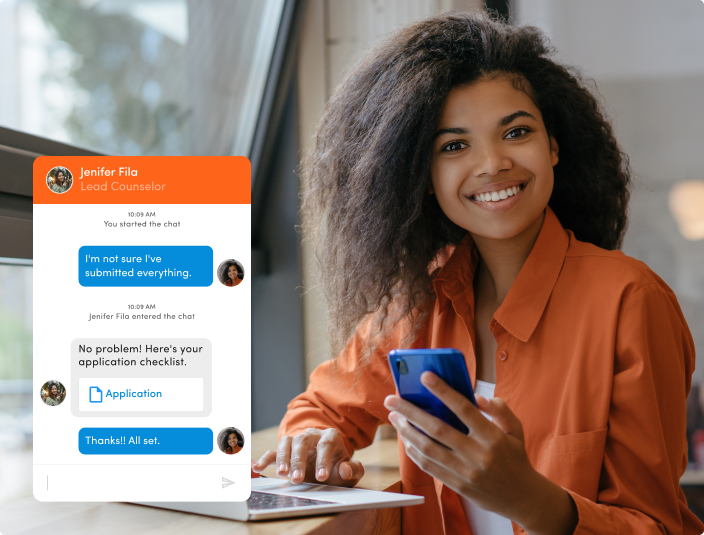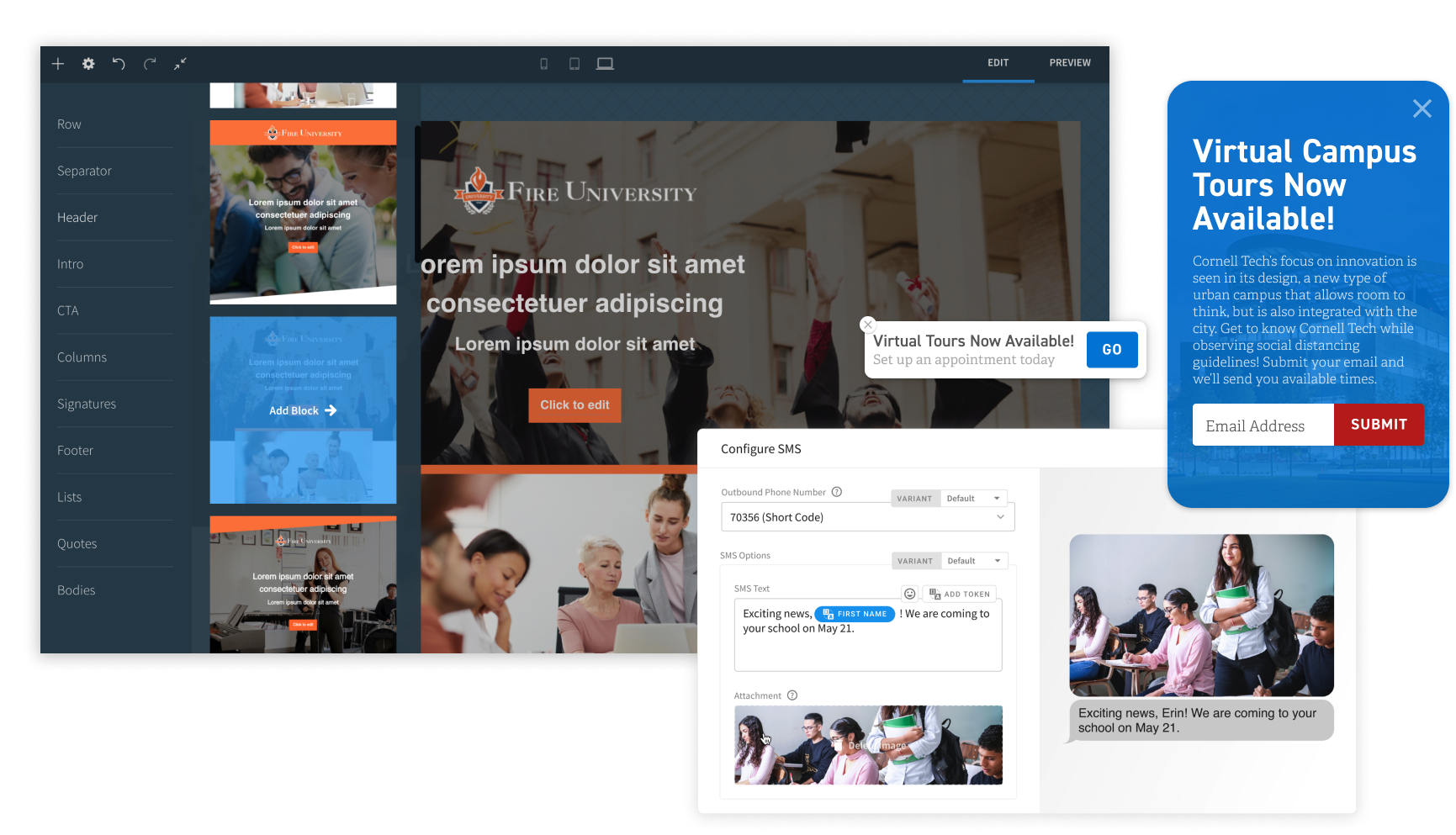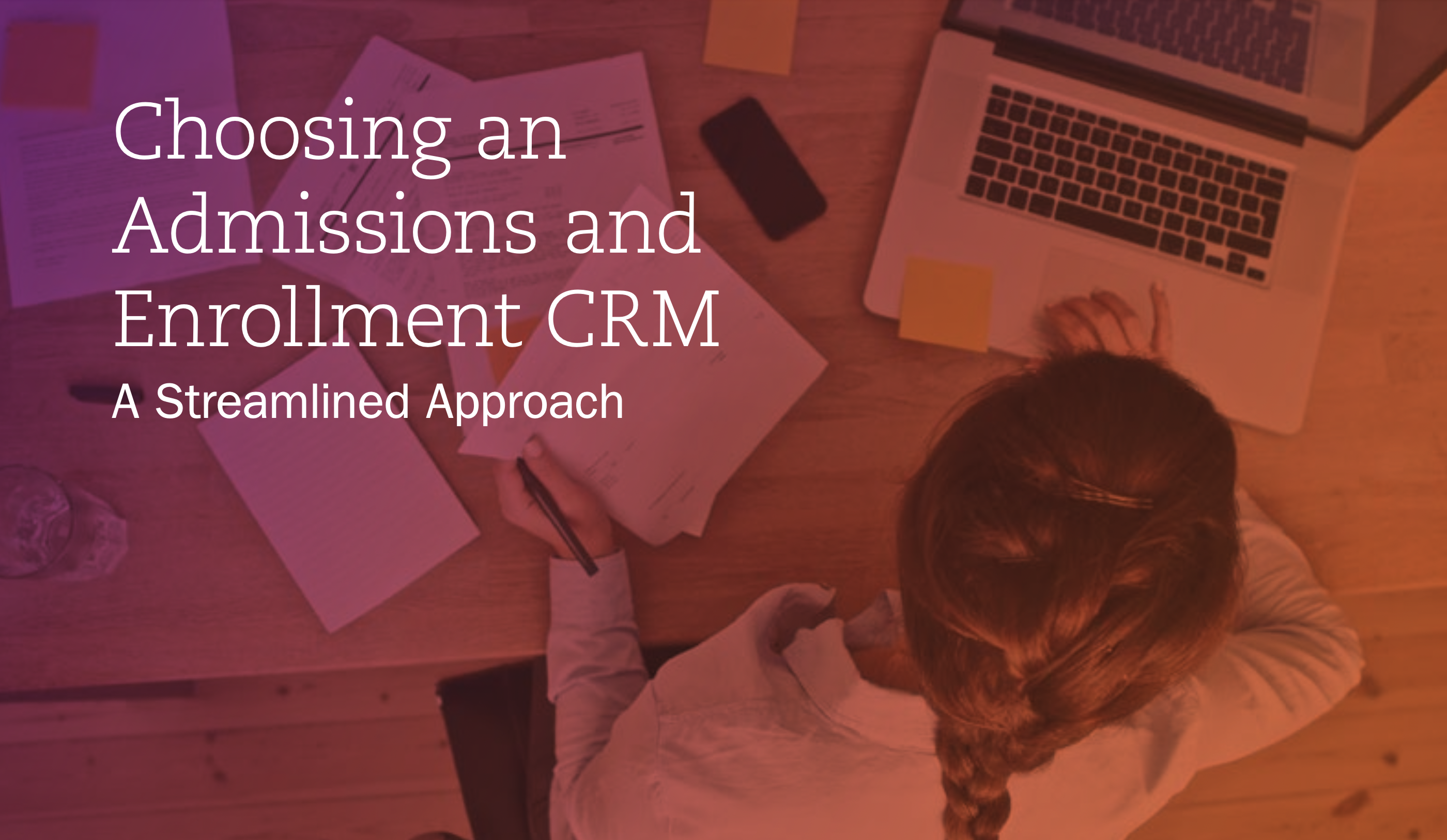Direct Admissions: How to Prioritize Your Enrollment Efforts
by Sirley Carballo · Updated Jun 22, 2023
Direct admissions in higher education, also known as direct enrollment, is becoming increasingly popular among colleges and universities looking to increase the size of incoming classes amid enrollment cliffs and dwindling applications.
This admission process enables institutions to extend an admissions decision before a student applies. By analyzing students' grades, test scores, or a simplified application, schools hope to shape their incoming classes well before prospects even begin the application process.
Proponents think this process might do two things at once: demystify the college experience and encourage students to choose colleges they might not otherwise. At the same time, this can benefit colleges by drawing in more tuition-paying applicants and boosting enrollment figures.
College applications, as we know it, are taking a back seat to direct admissions. What part of the admissions process should become the new priority for recruitment teams?

Who Does Direct Admissions Benefit?
From community colleges to public and private four-year universities, all types of schools are utilizing various strategies to implement a direct admissions model. In some cases, this is a component of state-wide efforts to increase access to higher education for students from all backgrounds, especially during the first year of a new program.
Due to its ease for students and quick turnaround, there are many benefits to direct admissions for community colleges and other institutions that have felt the effects of recent enrollment trends. They include:
- Providing underrepresented students with higher education opportunities
- Bridging the enrollment gap created by decreasing high school graduation rates
- Reaching high-priority students more quickly
Beyond providing access and college education opportunities to students, a direct admissions program can be seen as a way for community colleges and public/private four-year universities to combat low enrollment figures and prepare colleges for the consequences of declining nationwide high school graduation rates.
Instead of waiting for students to apply to their schools, admissions teams can now extend enrollment offers to way more prospects than ever before.
Schools already implementing this process hope that by increasing the number of prospects at the very top of the funnel, they can yield larger classes than in recent years.
What to Prioritize When Implementing Direct Admissions
While some institutions are keeping traditional admissions practices in addition to direct admissions, others are all in. And through partnerships with Common Application, Niche, and other higher education organizations, many schools are finding that the pool of students to choose from may be larger than expected.
Before, admissions staff worked hard to get students to submit applications to their schools. Now the goalposts are moving.
Different priorities are taking precedence when aiming to reach enrollment goals and build an incoming class. The common factor? Increased engagement throughout the entire recruitment journey.
Determine Which Students to Reach Out To
When considering direct admissions, determine which students to reach out to based on your desired enrollment goals. How does your historical data inform the demographics of your ideal students?
If your CRM has features like smart segments or engagement scores, you can dive into historical insights and analytics to determine any significant trends in your student body.
Ask yourself what types of students you want to attract demographically. Historically, what schools or cities produce the most successful prospects for your institution? And are there specific segments or cohorts of learners that you more successfully enroll than others? Do you need to fill specialty programs or majors with particular types of students?
Additionally, consider the types of applicants that would benefit most from a streamlined process and focus on targeting them.

See Element451 in Action
Students explore and pick where they’ll earn a degree in completely new ways. Welcome to the new world of enrollment, powered by Element451. Are you ready to take your efforts to the next level?
Get A Demo
Curate a Personalized Communication Plan to Convert
Once you've sent out your direct admissions offer, it's time to focus on conversions. There's a high likelihood that your direct offer will not be the only one your prospects receive. You have to treat each student like an individual and show them how valuable their presence will be to your incoming class.
The best way to build affinity and guarantee conversion? Connect with prospects with a student-centered method that is digital and immediate.
Forego the traditional mass-produced mailer for a personalized email. If your CRM software has the capabilities, you can even build an automated communication plan full of emails and text messages triggered by students and personalized by their interactions, interest, location, demographics, intent to apply, and more.
You can learn what resonates through behavioral marketing tactics and personalize the enrollment journey even more. There's no limit to the personalization that you can inject into your communication when you listen to students and let data dictate your next steps.

Hosting interest-specific virtual events, recording a personalized video message, or sending quick text reminders can also keep students engaged and on the right track.
By going above and beyond in reaching out to students, you can develop a meaningful relationship that will keep your school top of mind during the decision-making process.
Automate the Process, Focus on Engagement + Relationships
Many two- and four-year colleges and universities are pairing direct admissions with personalized relationship-building initiatives to move prospects through the enrollment funnel. By automating follow-up communication with personalized emails and SMS based on student behavior, you can eliminate manual work and use the valuable time you'll save to have meaningful conversations with students. The more personal, the better.
Again, you probably will be one of many schools sending that student a direct admission offer. With hyper-personalized messaging that adapts to where prospects are in the funnel and where their interest lie, you already have an advantage over institutions that will no doubt send generic mass emails to all their prospects.
Take it further by injecting your personal touch with your staff’s signature or photo. Make sure counselors leave notes in the person's profile so you can refer to specific interests when you hop on a call. No action is too small when you're focused on building meaningful relationships.
A higher ed-specific CRM makes it easy to get a full view of a student's profile and always know where they are in the process. This way, you can communicate with them about what matters to them, whether it be co-corriculars, financial aid, or post-grad career prospects.
The key is letting your software take care of the busy work so you can focus on the work that matters—a frictionless student experience.
Is Direct Admissions the Same Thing as Reverse Admissions?
Although much of the talk around increasing enrollment focuses on direct admissions, reverse admissions is also gaining traction.
The main difference is that direct admission depends on students choosing a school to pursue from all of their offers and still completing the application process. Reverse admission goes beyond qualifying students for acceptance—reverse admissions students are fully admitted allowing both schools and students to focus solely on the enrollment journey.
In reverse admission programs, students build profiles that showcase their achievements, interests, and goals. Then, schools use their selection criteria to zero in on relevant matches and extend admissions and scholarship offers to those students. Reverse admissions forces colleges to compete and essentially apply to students. Unlike direct admissions, the expectation of following through falls on colleges, not students.
Determining which admissions process will work best for you will depend on factors unique to your school. No matter which approaches you implement, it’s critical that you keep the student at the center and provide a frictionless experience to get their buy-in.

Guide to Choosing a CRM for Higher Ed
Learn what to look for when choosing higher education marketing and enrollment software.
Read the White Paper
Create an Admissions Process That Works With You, Not Against You
Element451 engages prospective students by empowering them to take charge of their admissions journey, connect with the right staff members, and receive automated reminders and notifications. Eliminating potential entry obstacles is one of the best methods to encourage direct enrollment.
Schedule a personalized Element451 demo to find out how to upgrade your school's enrollment and admissions procedures.

About Element451
Boost enrollment, improve engagement, and support students with an AI workforce built for higher ed. Element451 makes personalization scalable and success repeatable.
Categories
New Blog Posts

The Definitive Guide
AI in Higher Education
Bridge the gap between the latest tech advancements and your institution's success.
Useful Links
Related Articles

Talk With Us
Element451 is the only AI Workforce Platform for higher education. Our friendly experts are here to help you explore how Element451 can improve outcomes for your school.
Get a Demo








